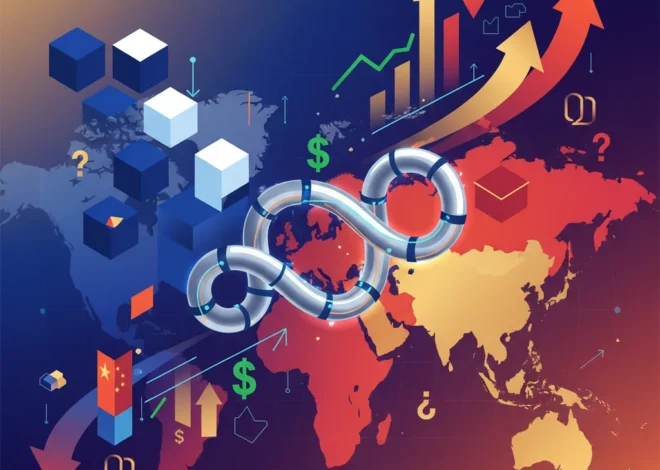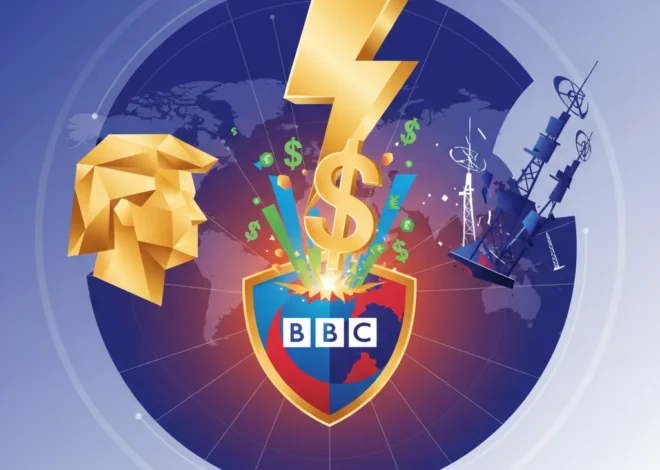Beyond the Battlefield: Ukraine’s High-Stakes War on Corruption and Its Economic Future
In the heart of a nation fighting for its very survival, a different kind of war is raging—one fought not with tanks and drones, but with audits, arrests, and public outrage. While the world’s attention is fixed on the front lines, a series of high-profile corruption scandals is rocking President Volodymyr Zelenskyy’s government in Kyiv. Allegations of kickbacks on critical defense projects, lavish lifestyles funded by illicit gains, and systemic graft have ignited a firestorm, threatening not only Ukraine’s internal stability but also the very foundation of its international financial support and long-term economic viability.
The latest crisis, detailed in a bombshell report by the Financial Times, centers on accusations that senior officials took massive kickbacks from projects designed to defend the country’s energy infrastructure—the same infrastructure being relentlessly targeted by Russian missiles. This isn’t just about stolen money; it’s about betrayal at a time of existential threat, a reality that poses a profound risk to investor confidence, the flow of foreign aid, and the country’s entire post-war reconstruction effort.
For investors, finance professionals, and business leaders, these events are more than just dramatic headlines. They are critical data points in assessing the geopolitical and economic risk of a nation pivotal to global stability. This article delves into the specifics of the corruption crisis, analyzes its far-reaching implications for Ukraine’s economy and investment landscape, and explores how technology could play a role in forging a more transparent future.
The Anatomy of a Wartime Scandal
The allegations are as brazen as they are damaging. At the core of the recent upheaval are claims that a sophisticated network of officials exploited the urgency of war to enrich themselves. The schemes allegedly involved inflating contracts for vital defense and reconstruction projects, with a percentage of the funds being funneled back to corrupt officials as kickbacks.
The details emerging from Ukraine’s anti-corruption bodies paint a stark picture. Here’s a summary of the key allegations that have come to light:
| Allegation / Case | Individuals / Departments Implicated | Reported Financial Impact | Status / Significance |
|---|---|---|---|
| Energy Infrastructure Kickbacks | Senior Ukrainian officials & contractors | Alleged kickbacks on contracts to protect energy plants. | Directly undermines national security and erodes public trust during wartime. |
| Procurement Fraud | Various government ministries | Inflated prices for essential supplies (e.g., food, military equipment). | Wastes precious state and donor funds, impacting frontline effectiveness. |
| Illicit Enrichment | High-level officials, including a former Supreme Court head | Discovery of “bags of cash” and luxury assets like a reported gold-plated toilet. | Symbolizes a culture of impunity that Kyiv is now under immense pressure to dismantle. |
These are not isolated incidents but symptoms of a deep-rooted problem that has plagued Ukraine for decades. The war, however, has dramatically raised the stakes. Every dollar lost to graft is a dollar diverted from the war effort, a dollar that could have purchased drones, paid a soldier’s salary, or rebuilt a hospital. The public anger is palpable, and President Zelenskyy, who rose to power on an anti-corruption platform, now faces the monumental task of cleaning house while simultaneously leading a nation at war.
A Radical Plan to Revive the UK Stock Market: Should Your ISA Savings Be Forced into Stocks?
The Economic Fallout: Why Corruption is a Ticking Time Bomb for Ukraine’s Finances
For the global financial community, the implications of this crisis extend far beyond Ukraine’s borders. The country’s economic survival is intrinsically linked to international support and future private investment. Corruption acts as a corrosive acid on both.
1. Eroding Investor Confidence and Inflating Risk
International investors considering participation in Ukraine’s reconstruction—a project estimated to cost upwards of $750 billion—are watching these developments with extreme caution. Systemic graft introduces a level of uncertainty that is toxic to investment. It inflates operational costs, creates an unpredictable legal environment, and raises the terrifying prospect of assets being expropriated or trapped by corrupt networks.
This directly impacts Ukraine’s position in the global financial markets. The perceived risk associated with Ukrainian sovereign debt and any assets available for international trading will remain elevated, demanding a higher risk premium. A stable, predictable, and transparent environment is the bedrock of a healthy economy and a prerequisite for attracting the foreign direct investment needed to rebuild. Without it, capital will remain on the sidelines.
2. Jeopardizing Foreign Aid and IMF Programs
The governments and international bodies bankrolling Ukraine’s defense and economy, such as the US, EU, and IMF, are accountable to their own taxpayers and stakeholders. They cannot and will not pour funds into a system where a significant portion is siphoned off. Continued financial support is explicitly tied to demonstrable progress on anti-corruption reforms. Any backsliding could lead to the delay or suspension of crucial aid packages, which would have a catastrophic effect on Ukraine’s public finance and its ability to function.
3. Undermining the Banking and Financial System
Large-scale corruption relies on a complicit or compromised banking sector to launder its proceeds. This crisis puts immense pressure on Ukraine’s financial institutions to strengthen their Anti-Money Laundering (AML) and Know Your Customer (KYC) protocols. A failure to do so could risk the country’s access to the global financial system, further isolating its economy.
A Hangover of Uncertainty: Why Diageo's Messy CEO Succession is Spooking the Market
A Glimmer of Hope: Can Technology Be the Answer?
While the situation is dire, it also presents an opportunity for radical transformation. The fight against corruption can be supercharged with modern tools, turning a moment of crisis into a catalyst for building a truly 21st-century government. This is where financial technology and other digital solutions come into play.
Imagine a future where every dollar of foreign aid is tracked transparently on a distributed ledger. The application of blockchain technology could provide an immutable, publicly verifiable record of how reconstruction funds are allocated and spent, from the donor agency all the way to the local contractor. This would drastically reduce opportunities for kickbacks and fraud.
Furthermore, advanced fintech platforms can be deployed to digitize and automate government procurement. By using AI-powered systems to analyze bids, flag anomalies, and ensure competitive pricing, Ukraine can move away from opaque, relationship-based contracting towards a transparent, data-driven model. The country has already had success with its ProZorro public procurement system, and doubling down on such financial technology is essential.
The Road Ahead: A Two-Front War for Survival and Solvency
Ukraine is fighting for its future on two fronts. The military war against Russia is visible and violent. The internal war against corruption is quieter but no less critical to the nation’s long-term survival and prosperity. The recent scandals are a painful but necessary wake-up call.
For the international community, the path forward requires a nuanced approach: continue to provide unwavering support for Ukraine’s defense while demanding and facilitating tangible progress on governance and transparency. For investors, the calculus involves weighing the immense risk against the potential of a resilient, reformed, and strategically vital nation emerging from the ashes of war.
The ultimate trajectory of Ukraine’s stock market (once it fully reopens), its creditworthiness, and its integration into the global economy will depend as much on its success in the courtroom as on its success on the battlefield. Winning the war is paramount, but winning the peace requires building a state that is not only sovereign but also solvent, transparent, and worthy of the immense sacrifices of its people.
The Phantom of Fast Fashion: Unmasking the Strategy Behind Shein's Enigmatic Founder


